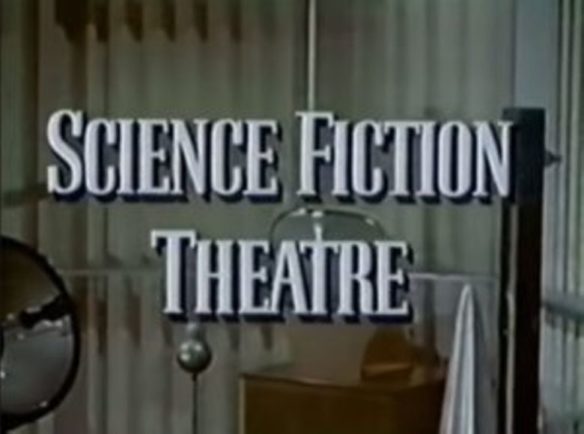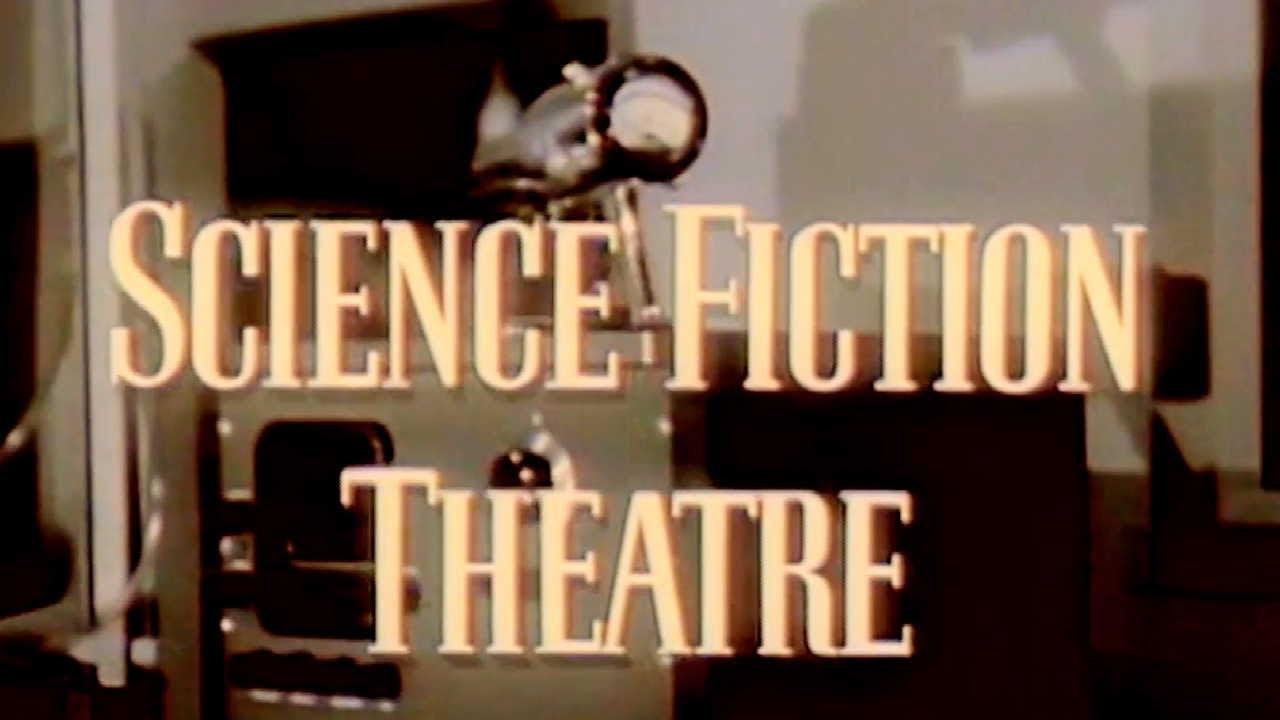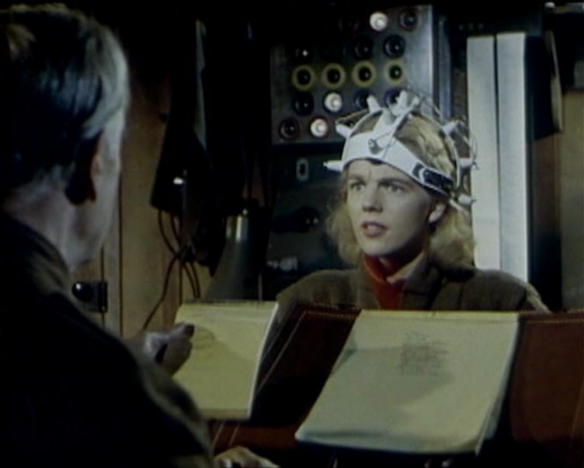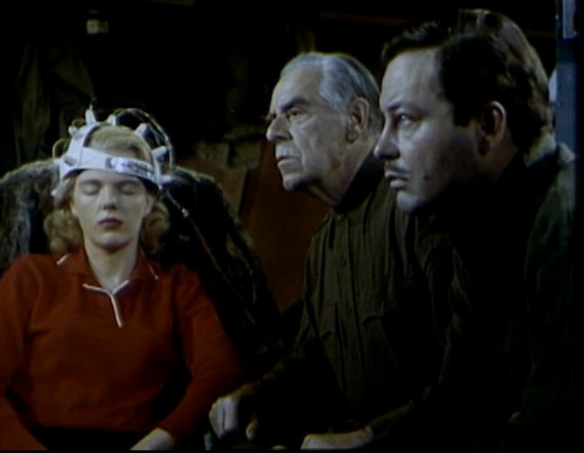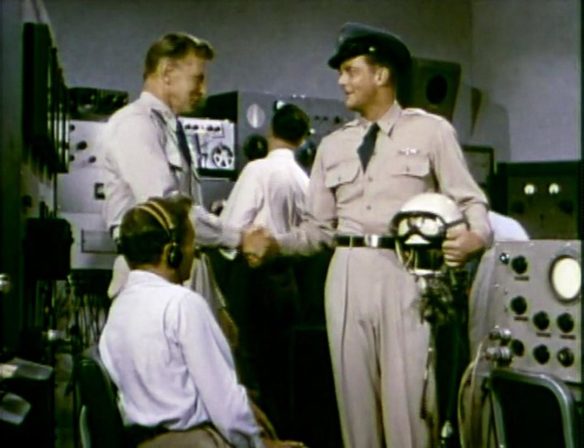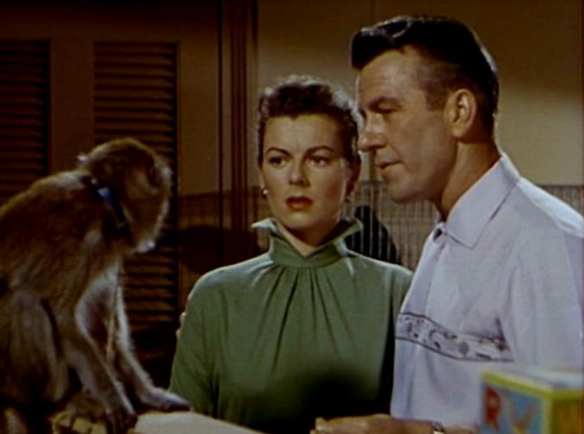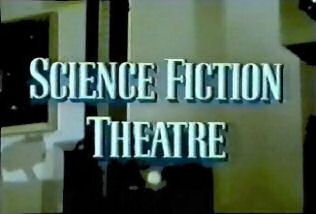(1) 2025 HWA LIFETIME ACHIEVEMENT AWARDS. The Horror Writers Association Lifetime Achievement Awards honorees for 2025 are Del Howison, Sue Howison, Dame Susan Hill, and David Cronenberg. The full citations are at the link.
(2) 2025 COMPTON CROOK AWARD. The Baltimore Science Fiction Society (BSFS) announced today that The Wings Upon Her Back (Tachyon Publications) by Samantha Mills won the 2025 Compton Crook Award for best debut SF/Fantasy/horror novel, a prize worth $1,000. “Samantha Mills Wins 2025 Compton Crook Award” at File 770.
(3) WHO HAS READ THESE BOOKS? Nicholas Whyte’s post about the “Nebula and BSFA shortlists and the Goodreads and LibraryThing stats” at From the Heart of Europe are one way to test how widely known books were before they became award finalist.
It’s shortlist time again! Just to remind you, the GR and LT stats are a guide to how well a book has permeated the general market, but may not have much congruence with the respective voter bases of the two awards.
He’s done another for “2025 Hugo final ballot: Goodreads / LibraryThing stats”. One of his observations is:
A clear lead for The Ministry of Time in market penetration, though The Tainted Cup has the most enthusiastic readers.
(4) BLOCK THAT OUT! Who knew Minecraft would bring out filmgoers’ rowdy side? “Witney cinema issues Minecraft warning after online trend” reports BBC.
A cinema has told customers to behave during showings of A Minecraft Movie after rowdy behaviour at other screenings went viral on social media.
A sign displayed at Cineworld in Witney, Oxfordshire, has warned people any form of anti-social behaviour would see them removed without a refund.
The film, which received underwhelming reviews from critics, made an estimated $300m (£233m) globally at the box office on its opening weekend.
Its popularity has spread online, with videos of young audience members shouting responses and celebrating the appearance of different characters made famous by the video game – which is one of the world’s best selling.
The film tells the story of four misfits pulled through a mysterious portal into the Overworld – the place where all players start in Minecraft.
A number of lines from star Jack Black – in particular his introductory “I… am Steve” – have been met with cheering, shouting and applause.
One moment showing the arrival of the character Chicken Jockey – alongside Black’s accompanying dialogue – has also been the focal point for much of the furore….
(5) ROBOTS RETURN. Netflix has dropped a trailer for “LOVE DEATH + ROBOTS VOLUME 4”. And at the link you can see five first-look images.
The fearless anthology series Love, Death + Robots is returning for a fourth volume of mechanical madness. You can always expect this anthology series to serve up some wild stuff, and Volume 4 is definitely no exception.
“I try to get a mix of horror, sci-fi, and fantasy,” creator Tim Miller (Deadpool, Terminator: Dark Fate) tells Tudum about the new lineup of shorts. “And we work with some really fucking fantastic writers and artists.”
(6) WHO TRIES TO BAN BOOKS? “Majority of attempts to ban books in US come from organised groups, not parents” reports the Guardian.
A large majority of attempts to ban books in the US last year came from organised groups rather than parents.
72% of demands to censor books were initiated by pressure groups, government entities and elected officials, board members and administrators, reported the American Library Association (ALA). Just 16% of ban attempts were made by parents, while 5% were brought forward by individual library users.
“These demands to remove and restrict books and other library materials are not the result of any grassroots or popular sentiment,” read the ALA’s 2025 State of America’s Libraries report, published on Monday. “The majority of book censorship attempts are now originating from well-funded, organised groups and movements long dedicated to curbing access to information and ideas.”
(7) DIAMOND’S IN THE ROUGH. Publishers Weekly is there when “Fight Breaks Out for Ownership of Diamond Comic Distributors”.
Days before a court hearing was set to take place April 7 to move ahead with the sale of most of Diamond Comic Distributors assets to Alliance Entertainment (AENT), Diamond owners had a change of heart and are now favoring a new, smaller joint bid by Canadian comics distributor Universal Entertainment and pop culture manufacturer and licensor Ad Populum. Attorneys for Alliance immediately filed a lawsuit to block the change and a hearing was held yesterday in the U.S. Bankruptcy Court for the District of Maryland to try to sort things out.
The April 7 hearing was focused on the appropriateness of the Alliance bid and was adjourned before the hearing was completed. The parties were due back in court April 8 and a decision is due May 28. That timeline however, is now thrown into serious question following the filing of Alliance’s April 6 lawsuit challenging the legality of Diamond’s owners’ decision to back the offer from Universal and Ad Populum.
The suit accuses Diamond of acting in bad faith by conducting an auction “in a manner that was unfair to any party other than their preferred purchaser, and—despite having designated AENT as the Successful Bidder—acted with extreme bad faith in the period following the Auction.” According to the filing, AENT’s bid of $72.2 million was deemed the highest offer and that Universal/Ad Populum were the underbidders.
According to the lawsuit, despite the offer from AENT, Diamond secretly solicited other bids with an eye toward favoring Universal (who had placed a $39 million stalking horse offer at the time of the bankruptcy filing in January) and Ad Populum. After more negotiations between AENT and Diamond, the lawsuit says, Diamond “abruptly terminated” its agreement saying that it “would proceed with the backup bidder.” To facilitate the switch, Diamond filed a motion last week asking the court to approve the sale of the company’s assets to the joint back-up bidder.
In its filing, AENT argued that its offer, which had been raised to $85.37 million, was much higher that the $69.1 million combined bid from Universal Distribution and Ad Populum, which included $49.6 million from Universal for Diamond UK and Alliance Games Distributions, and $19.5 million from Ad Populum for Diamond Comic Distributors, Collectible Grading Authority, and Diamond Select Toys….
(8) MEMORY LANE.
[Written by Cat Eldridge.]
Science Fiction Theatre (1954)
Again tonight, I’m reaching back into early days of the genre in broadcast terms by talking about the television premiere of Science Fiction Theatre which seventy years ago started off in syndication. It would end rather quickly two years later on the sixth of April with a total of seventy-eight episodes over the course of just two seasons.
The first season was in color but to save money the second was not. I know this reverses the usual manner of going from black and white to color, but I confirmed that they actually did this.
It was the product of Hungarian born Iván Tors who had earlier done the Office of Scientific Investigation trilogy of SF films (The Magnetic Monster which recycled footage from a German horror film, Riders to the Stars and Gog which average twenty percent among audience reviewers at Rotten Tomatoes). He’s also responsible for Flipper and Flipper’s New Adventure which surely are genre adjacent, aren’t they?
Hosted by Truman Bradley, a radio and television announcer and a Forties film actor, its schtick, and I use that Yiddish word in its fullest sense, was that they were doing a quasi-documentary series that what Ifs of modern science. Now mind they were to a great extent re-using the stories that had been earlier on Dimension X, so they were recycling existing stories. Or so say several sources.
The program never aired over a network. All seventy-eight twenty-six minute episodes were syndicated across the country in package deals of thirty-nine episodes each, with Bradley doing custom commercials for each market.
If you watched it later on PBS, you got the entire episode, but when the Sci-fi channel broadcast them they were cut by five minutes to cram in more blipverts, errr, I mean advertisements. Sci-fi that does with everything.
It’s streaming on Roku offers on its Movie Classics channel.

(9) TODAY’S BIRTHDAY.
[Written by Paul Weimer.]
April 8, 1974 — Nnedi Okorafor, 51.
By Paul Weimer: Nnedi Okorafor has written some of (to my perspective, and a moment to explain that) genre-bending speculative fiction that I’ve read. Let me explicate. There is science fiction, and there is fantasy, and then there is the peanut butter and chocolate of books that take elements of both. Or, specifically, books that feel like they partake of both. Okorafor herself I think might disagree, but much of the work I’ve read of hers does do that in my own mind and limited perception.
Take Lagoon, the first of her works I read. Near future, Nigeria, First Contact. Straight-up science fiction, right? Sure, it’s a first contact novel, but several of the protagonists have what are really just straight up superpowers. Adaora can breathe underwater, after all. And then there are actual folklore and mythic beings just living their lives in Lagos, too. I mean having a trickster deity as a phone scammer is genius, I tell you. It makes perfect sense, and instead of being in an urban fantasy, the character exists in a first contact novel, just another character with everyone else dealing with the aliens.
Inspired, to be sure.
Lagoon is my favorite of her works, but I think the Binti trilogy is probably her best work. Three novellas/short novels about the titular mathematical genius’ trip to the stars and the aliens and beings she deals with out there. Binti just wants the best education she can get, and for her trouble winds up in the middle of a war, and a relationship with an alien species under threat thereby. Fearlessly inventive, grounded in her culture and ferociously futuristic and grounded at the same time. I’ve read other authors in her vein since, but Okorafor was my first real exposure to this entire stratum and voices of emerging science fiction from Africa.
I have not yet read her metafictional Death of the Author, but I clearly need to. I’ve met her several times, including a talk she gave at my local library (she had no idea who I was, alas, and perhaps still doesn’t).
Happy birthday, Nnedi!

(10) COMICS SECTION.
- Jumpstart poses a word origin.
- Reality Check sees fonts misbehaving.
- Speckticles has a super complaint.
(11) TODAY’S THING TO WORRY ABOUT. Oh noes! Jon Del Arroz is trying to load up the Locus Awards with his pals! Camestros Felapton is ringing the tocsin in “New Right Wing Slate Shenanigans”.
… The Locus Award is open to anybody to vote in but subscribers to Locus Magazine have votes that count for double. This extra weighting for members has discouraged slate attempts in the past. Fandom Pules has already put out a Dragon Award nomination slate but as I’ve discussed before, it is not clear whether how many people nominate a work has much of a connection to the Dragon Award finalists. The Locus Awards, on the other hand, do count their votes. Additionally, JDA has been attempting to recruit people on the abuse/harassment website Kiwi Farms to vote in the Locus (although this has been met with some scepticism among the trollish inhabitants)….
(12) THEY’RE PEEVED. “Max Removing HBO Original Series From Streaming Has Fans Crying Foul” reports CBR.com.
Damon Lindelof’s hit drama series The Leftovers is slated to be removed from HBO’s Max streaming service.
Per ComicBook.com, The Leftovers is officially going to be removed from Max as of June 3. Originally, the series was supposed to make its exit from the streaming service on April 11, though that date was pushed back by almost two months. Even with the extra time to stream the series, fans of The Leftovers have let their displeasure be known online and through social media….
… Since the series ended in 2017, The Leftovers has maintained its status as a fan-favorite. As of the time of writing, The Leftovers holds a 91% “Fresh” rating on review aggregator Rotten Tomatoes, as averaged from 84 critics reviews. The series also boasts a 90% score via the site’s user-generated “Popcornmeter.”
(13) WE SIT, BOY, SIT CORRECTED. “No, the dire wolf has not been brought back from extinction” insists New Scientist, which says “they are actually grey wolves with genetic edits intended to make them resemble the lost species.”
A company called Colossal Biosciences says it has revived an extinct species – the dire wolf. “On October 1, 2024, for the first time in human history, Colossal successfully restored a once-eradicated species through the science of de-extinction. After a 10,000+ year absence, our team is proud to return the dire wolf to its rightful place in the ecosystem.” That’s the claim made on the website of the US-based company. Here’s what we know….
… Beth Shapiro of Colossal says her team has sequenced the complete genome of the dire wolf and will soon release it to the public. Shapiro could not tell New Scientist how many differences there are but said the two species share 99.5 per cent of their DNA. Since the grey wolf genome is around 2.4 billion base pairs long, that still leaves room for millions of base-pairs of differences.
And Colossal claims it has turned grey wolves into dire wolves by making just 20 gene edits?
That is the claim. In fact, five of those 20 changes are based on mutations known to produce light coats in grey wolves, Shapiro told New Scientist. Only 15 are based on the dire wolf genome directly and are intended to alter the animals’ size, musculature and ear shape. It will be a year or so before it’s clear if those changes have had the intended effects on the genetically modified animals, says Shapiro.
So these pups aren’t really dire wolves at all, then?
It all comes down to how you define species, says Shapiro. “Species concepts are human classification systems, and everybody can disagree and everyone can be right,” she says. “You can use the phylogenetic [evolutionary relationships] species concept to determine what you’re going to call a species, which is what you are implying… We are using the morphological species concept and saying, if they look like this animal, then they are the animal.”…
(14) COLD-BLOODED SMUGGLING. Chris Barkley sent the link because he grew up in the neighborhood: “Cincinnati’s unique lizards are ‘getting larger,’ Nat Geo says” in the Cincinnati
As the weather warms, you might find a few scaly friends running around Cincinnati.
For more than 70 years, thousands of common wall lizards, known as Lazarus lizards, have scurried across sidewalks and lurked in your garden. They’re all over Cincinnati, but the reptiles aren’t from here. They’re an invasive species and native to Europe.
So how did they end up in the Midwest? It’s all thanks to a 10-year-old boy from Walnut Hills and a sock full of lizards.
In 1951, George Rau Jr. and his stepfather, Fred Lazarus Jr. (who founded the retail chain Lazarus, which would later become Macy’s), smuggled 10 Italian lizards home from a family trip in Lake Garda and set them loose in his backyard.
Many pass off the origin story as local lore, but in 1989, when Rau Jr. was an adult, he wrote to the Cincinnati Museum of Natural History explaining his role in the eventual lizard population boom. That same year, he also told The Enquirer he smuggled the lizards through customs and brought them back to his East Side home.
Last month, the Queen City’s long and unique history with Lazarus lizards was highlighted by National Geographic. In the article, National Geographic stated Cincinnati has the “perfect lizard habitat,” adding the city’s hilly geography and weather as a contributing factor for the lizards becoming “permanent residents,” as declared by the Ohio Division of Wildlife.
(15) PREDATOR. On June 6, Predator: Killer of Killers arrives on Hulu.
(16) REMEMBERING A BREAKTHROUGH. “The Day Anime Changed” at Mother’s Basement.
Let’s talk about the most important, influential anime of all time, and why now’s best time to watch it!
[Thanks to Steven French, Kathy Sullivan, Lis Carey, Teddy Harvia, N., Mike Kennedy, Andrew Porter, John King Tarpinian, Chris Barkley, Cat Eldridge, SF Concatenation’s Jonathan Cowie, and Mark Roth-Whitworth for some of these stories. Title credit belongs to File 770 contributing editor of the day Daniel CSN&Y Dern.]


